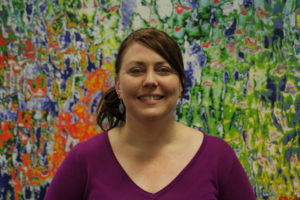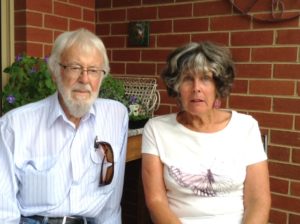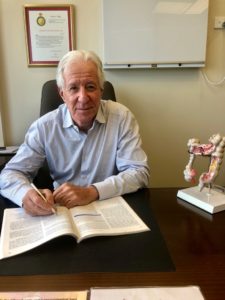Olympian and former resort director join battle to preserve nation’s leading cross country skiing area from development
By Amy Liddelow
Paul Gray knows better than most what’s at stake if a world-renowned cross-country ski trail becomes collateral damage in a bid to boost year-round tourism at Falls Creek.
As a boy, Gray and his brothers would get up early on Fridays to nab the best set of hire skis from the high school at Mount Beauty, before spending their weekends out on the north-east Victorian resort’s extensive network of sheltered trails.
It was on this nurturing ground that Gray was able to hone his skills, eventually becoming a two-time Olympian and the first Australian to win the Kangaroo Hoppet, the country’s premier long-distance cross-country ski race.
“Falls Creek has been a huge part of my life for a long time,” Gray, now 53, says. “If they clear the road we lose what makes this place special.”
“The road” is Bogong High Plains (BHP) Road, which climbs from Mount Beauty up to the Victorian government-owned and managed ski resort of Falls Creek. In winter, the road beyond the alpine village out to the high plains is closed to traffic, forming a key part of a free network of cross-country ski trails.
But in June, the resort announced plans to start clearing snow next year from a 1.2km stretch to allow cars and shuttle buses to reach a major new development near Rocky Valley Lake.
The decision sparked anger among some residents, who warn it will lay waste to Falls Creek’s reputation as Australia’s home of cross-country skiing. Meanwhile, business operators hope the development will offer protection against the impending impacts of climate change on resort trade.
‘Bombshell’ announcement
Down at the resort’s lakeside precinct, the views are spectacular across the Bogong High Plains but there are no facilities apart from some kayaks and paddle boards for hire in summer. To address this, the 2016 Falls Creek master plan identified the area as a base for “green season” leisure activities.
So when Falls Creek Resort Management (FCRM) announced $3.5m in funding for the “Lakeside Development Project” – with $2.5m for “water sport activation” – there was an expectation for a summer project that would shield the village from a diminishing ski season and other economic effects of climate change.
However, FCRM then announced the project – which will upgrade the historic Australian National Antarctic Research Expedition shed into a large new cafe with a lookout deck, and build 100 new car spaces – would operate year-round, requiring a major section of the BHP Road to be cleared to allow winter access.
“I was at the initial meeting when the bombshell about road clearing in 2023 was announced,” Birkebeiner Nordic Ski Club secretary Ronice Goebel says.
“The club has had no communication since. This is a sorry business given the connection and sense of place many locals have for Falls Creek.”
‘Main artery’ of trail network
After moving to Melbourne to study, Gray returned to Mount Beauty 13 years ago with his wife and two daughters. They are now heavily involved in volunteer coaching of young skiers, passing on Gray’s skills and passion to the next generation.
He says while Falls Creek has an extensive network of cross-country trails, what sets it apart from other resorts is the sheltered terrain created by the road network, of which BHP Road is the “main artery”.
This is where beginners and school groups spend all their time, Gray says. Clearing 1.2km of road actually impacts about 4km of flat, protected terrain which is “massive for a beginner”.
“It’s like saying, ‘Oh, we’ll take 1.2km away from Wombat’s Ramble, you’ve got all the rest of the mountain to ski on’. It doesn’t work that way. This is the main artery, the whole system’s based around this part of BHP Road, so we lose all the interconnecting trails.”
Planning for the impacts of climate change
Both the FCRM and the board declined requests for an interview, however in an emailed statement, chief executive Stuart Smythe said the Falls Creek master plan clearly referenced year-round activation and increased commercial operations “throughout the entire document”.
The year-round activation of the lakeside precinct is supported by business operators, according to the Falls Creek Chamber of Commerce president, Lisa Logan.
“We know there is more interest in coming to Falls Creek outside of winter but also the aspect over the lake would be a great thing to open up during the winter time,” Logan says.
She says the area’s close proximity to the ski lifts on the south-facing slopes would be an advantage, as the north face struggles to hold enough snow in a warming climate.
“Then we can see some more longevity in terms of what offerings the village can make,” she says.
Tawonga South resident Jonathan Spring is an avid cross-country and downhill skier and cyclist who visits Falls Creek with his family throughout winter.
Spring says there is public concern that summer season activation is being used as a Trojan horse by FCRM to establish additional winter car parking, while green season activation is secondary.
He points to an email from FCRM to a community member which states that over time climate change will make the north-facing slopes unviable for skiing and the southern-facing slopes will become “increasingly important to the long-term viability of the resort”.
The email goes on to say: “This will similarly necessitate a requirement to provide day parking in the vicinity and the potential for new lifting infrastructure in this area.”
Spring says: “The addition of winter car parking to this project, with the associated road clearing, is not part of the master plan.”
The cost of speaking up
Tawonga South resident Ben Derrick is leading the campaign to stop the road clearing as president of Cross Country Skiing Association Victoria.
As a former resort employee for 14 years, Derrick delivered the 2016 master plan as director of economic development. He maintains it was not the plan to develop winter day parking, or any kind of lifted infrastructure, or any kind of satellite commercial infrastructure out by the lake.
While acknowledging climate change will impact the resort, he questioned the use of it to justify the plan to clear BHP Road.
“If there’s no front side skiing then all you need to do is just get people over to the back of the resort, you don’t need to put a whacking great carpark out by the lake and increase the development footprint of the resort,” he said.
Derrick was in August sent “cease and desist” letters from a legal firm representing the FCRM board. The letters accuse him of breaching his employment agreement and spreading misinformation in what he maintains is “a legitimate, peaceful and transparent” public campaign to oppose the proposed lakeside development.
He believes citizens should be free to criticise public servants without fear of being sued.
“It’s really offensive to get notifications like I’ve done something legally wrong, when all I’ve done is stand up for the community, and stand up for the industry as well, so they don’t make poor decisions like this,” Derrick says.
“I didn’t sleep at night, my wife didn’t sleep, we were just waiting for the next instalment to come back.”
FCRM declined to respond to questions about the legal threats.
Complicating matters is a state government overhaul that means the FCRM board ceased to exist on 30 September, replaced by Alpine Resorts Victoria – the new centralised governing body of Victoria’s alpine resorts from 1 October.
Before its tenure ended, the FCRM board clarified it had “not made a decision with respect to clearing snow from the road and will not be doing so in its remaining term”.
In the meantime, Gray plans to continue fighting for a sport he loves.
“I’m hoping they’ll value what we have here,” he says. “I don’t want to lose the beauty of Falls Creek.”






